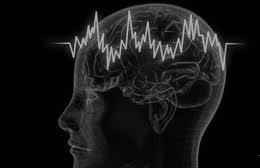
Learning is the most vital part of our life. Those who learn the thing quickly will get success in their field but learning speed vary from student to student. And boring lecture sessions are everyday incidence on any college campus. But what if there was improved, safer method to learn new or difficult material more rapidly? What if "thinking caps" were real?
In a latest study published in a Journal of Neuroscience, Vanderbilt psychologists Robert Reinhart, a Ph.D. candidate, and Geoffrey Woodman, assistant professor of psychology, illustrate that it is probable to selectively influence the ability to learn via a application of the mild electrical current to a brain, and that this effect can be developed or depressed depending on direction of current.
The medial-frontal cortex is supposed to be a part of a brain responsible for instinctive Oops! reply we have when we make mistake. Preceding studies have demonstrated that spike of negative voltage initiates from this area of brain milliseconds after person makes error, but not why. Reinhart and Woodman wished to test idea that this activity influences learning as it permits brain to learn from our faults. And that is what we set out to test: What is a actual function of these brainwaves?" Reinhart said. "We wished to reach into the brain and causally control the inner critic."
Reinhart and Woodman set out to test some hypotheses: One, they wished to set up that it is likely to control brain's electrophysiological response to errors, and two, that its consequence could be deliberately regulated up or down depending on direction of electrical current applied to it. This bi-directionality had been experimental before in animal studies, but not in humans. As well, researchers set out to see how long effect lasted and whether results could be universal to other tasks.
Stimulating the brain

Using the elastic headband which secured two electrodes conducted by saline-soaked sponges to cheek and crown of head, researchers applied 20 minutes of transcranial direct current stimulation (tDCS) to each subject. In tDCS, very mild direct current travels from anodal electrode, through skin, bones and brain, muscle, and out through corresponding cathodal electrode to complete circuit. "It is one of the safest methods to noninvasively stimulate brain," Reinhart said. Current is so moderate that subjects reported only few seconds of tingling or itching at starting of each stimulation session.
In every three sessions, subjects were arbitrarily provided either anodal (current travelling from electrode on crown of head to one on cheek), cathodal (current travelling from cheek to crown) or sham condition which replicated physical tingling sensation under electrodes without affecting brain. Subjects were unable to tell difference between three conditions.
The learning task
After 20 minutes of stimulation, subjects were provided learning task which involved figuring out by trial and error which buttons on game controller corresponded to specific colours displayed on monitor. Task was made more complex by occasionally showing signal for subject not to respond sort of like a reverse Simon Says. For even more complexity, they had less than second to respond accurately, giving many opportunities to create errors and, thus, a lot of opportunities for medial-frontal cortex to fire.

Researchers calculated electrical brain activity of each participant. This permitted them to watch as brain changed at very moment participants were producing mistakes, and most significantly, permitted them to find out how these brain activities altered under influence of electrical stimulation.
Controlling the inner critic
So when we up-regulate the process, we can make you more vigilant, more adaptable to new or changing situations, less error-prone -- which are pretty extraordinary Reinhart said. When anodal current was supplied, spike was roughly twice as large on average and was considerably higher in majority of individuals tested. This was shown in their behaviour; they made less error and learned from mistakes more rapidly than they did after sham stimulus. When cathodal current was applied, the researchers observed the opposite result: The spike was significantly smaller, and the subjects made more errors and took longer to learn task.
The effect was not clear to subjects, their error rates only differed about four percent either way, and behavioural adjustments adjusted by matter of only 20 milliseconds, but they were plain to see on EEG. This success rate is far better than that experiential in studies of pharmaceuticals or other kinds of psychological therapy.
The researchers determined that effects of a 20-minute stimulation did transfer to other tasks and lasted about five hours.
Implications of result extend beyond potential to get better learning. It may also have clinical benefits in treatment of circumstances like schizophrenia and ADHD that are related with performance-monitoring deficits.